Cold play: Rolf Sachs conjures an alpine adventure in a Swiss chalet
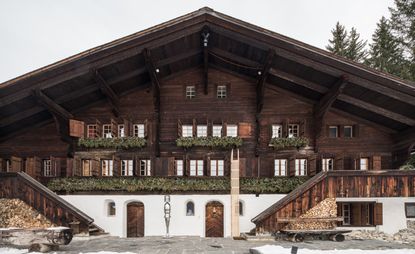
An ash wood sled stands sentinel outside of a traditional Swiss chalet, looming comically over the front door at four metres tall. It seems poised for the slopes – surely the home’s inhabitants are having a laugh?
In fact, it’s an artwork by the Swiss artist Rolf Sachs, heralding his exhibition at the Vieux Chalet in Gstaad, Switzerland. Presented in collaboration with Hauser & Wirth, the show explores alpine culture through a series of sculpture, portraiture, and site-specific installations. For the Lausanne-born, London-based artist, ‘Alpine culture comes with a certain ease,’ he says.
Sachs’ Rasté (2012) – a handsome rake, hand-carved from slate – is the first to greet visitors in the foyer. Framed through an archway behind, an ice pick defiantly pierces a piece of thick felt – the absurdist juxtaposition here is crucial to Sachs’ visual language.
The chalet is lavishly decorated and finding Sachs’ work amongst the trove of mountain-kitsch furnishings becomes a delightful game in itself. So much so, a guest placed his hat on a €20,000 artwork on the opening night, mistaking it for a coat hook.
But it’s all very much in the spirit of the work, and Sachs’ chameleonic pieces live as comfortably in the home as the furniture. ‘That is the point,’ he says. ‘For instance, the rake could have been a real one from 100 years ago. It was an essential tool for the valley and might have hung [in the foyer] for all we know. On top of that I like the aesthetics, I made it in stone to give it a sculptural value.’
In the living room, Alberto Giacometti’s sculptural works flank Sachs’ powerful site-specific intervention Rocks (2016) – a harmonious, wall-hung arrangement of stones handpicked by the artist from the local mountain region. ‘The stones have an incredibly strong presence. It boils down the creative process to the bare minimum’ explains the artist of the work, adding, ‘Nature is the most beautiful sculpture.’
Hanging next to an imposing stone fireplace nearby: a pair of small silhouette portraits, one of Sachs, the other of his late father. It’s an especially revealing piece: Vieux Chalet once belonged to Sachs’ father, Gunter Sachs, a renowned photographer, industrialist, author and avid art collector. Here, local artist Beatrice Straubhaar was commissioned by Sachs to create a modern rendition of Scherenschnitt (or scissor-cut), a traditional craft in Germany and Switzerland popular during the 19th century and Goethe era.
Elsewhere, Sachs continues this tribute to local Swiss craft and agricultural iconography. He pays homage to Brancusi’s Endless Column with a stack of Motteli (wooden food vessels) produced using an old Swiss wood working method; gets spiritual in Bet(t)ruf (2016), creating a sculpture from the milk funnels (Folle) used to call prayers in the evening; and illuminates a room with a starry effect, using a perforated milk churn and bucket.
Sachs is often described as an artist/designer, but it’s a label that belies him. Certainly, many of the works are flawless specimens of craftsmanship. But in the end, design is simply his artistic medium of choice.
The exhibition is scattered throughout the labyrinthine chalet, forming a dialogue with both his father’s home and works by Hauser & Wirth artists. A mezzanine overlooking the living room houses Hay Fling (2016), capturing a handful of hay frozen joyfully in mid-air. The view from the mezzanine also reveals a subtle video installation embedded in the window frame – a soothing snowfall that can be seen from inside and outside – which Sachs describes as ‘very spiritual’.
In the evening, the chalet is lit up outside by a site-specific neon installation, which mimics water flowing from a rain gutter using a long strip of blue neon while a steel bucket catches the light below. After a hard day out in the elements, Sachs’ warm-hearted alpine delights are the perfect antidote to the cold.
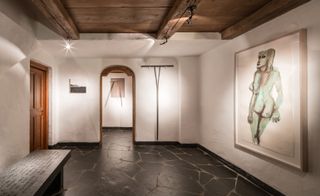
Sachs’ Rasté (centre), 2012 – a handsome rake, hand-carved from slate – is the first to greet visitors in the foyer

Nearby, an ice pick defiantly pierces a piece of thick felt in Untitled (2nd edition), 2016
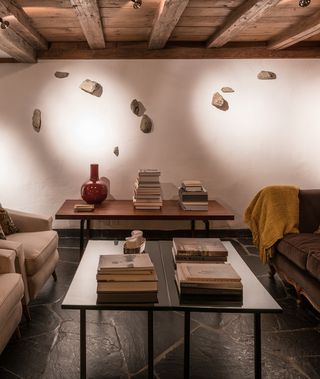
Rocks, 2016, is a powerful arrangement of stones, handpicked by the artist from the local mountain region and hung harmoniously on the wall
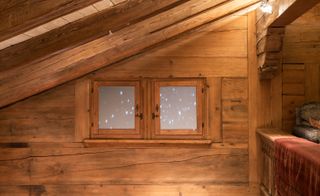
Leise rieselt der Schnee, 2016. A video installation is subtly embedded in the window frame, depicting a soothing film of snowfall (captured by Sachs in the Engadin region), which can be seen from inside and outside

Pouring light - Saahne, 2016, comprises a perforated milk churn and bucket sourced from the Alpine region of Emmenthal. The illumination from within creates a 'pin-hole' camera effect

Sachs nods to positive childhood memories with Gaudi, 2013, a light-hearted interpretation of the classical wooden sled
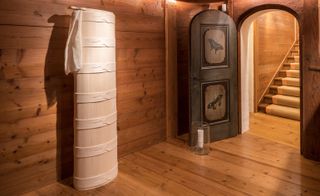
Unschuld, 2015. These objects were traditionally used to transport milk from the mountainside, where the cows grazed. Here, Sachs has transformed them into a totem, complete with a cheese cloth
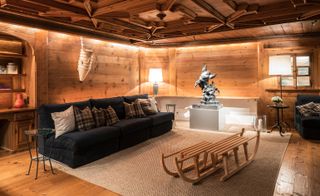
The exhibition is presented in collaboration with Hauser & Wirth, and works from its stable of artists . Bet(t)ruf, 2016 (left) and insepera-able (2nd edition), 2012 (foreground) flank a Paul McCarthy sculpture

In Bet(t)ruf, 2016, Sachs creates a sculpture from the milk funnels used to call prayers in the evening

In the evening, the chalet is lit up outside by a site-specific neon installation, Ewiger Lauf, 2012, which mimics water flowing from a rain gutter using a long strip of blue neon while a steel bucket catches the light below
INFORMATION
The exhibition is on view at Vieux Chalet in Gstaad until 18 February. Open by appointment only. For more information, visit Rolf Sachs' website
Photography: Jon Etter
Wallpaper* Newsletter
Receive our daily digest of inspiration, escapism and design stories from around the world direct to your inbox
-
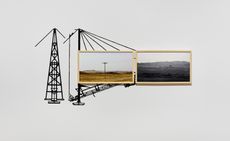 Aindrea Emelife on bringing the Nigerian Pavilion to life at the Venice Biennale 2024
Aindrea Emelife on bringing the Nigerian Pavilion to life at the Venice Biennale 2024Curator Aindrea Emelife has spearheaded a new wave of contemporary artists at the Venice Biennale’s second-ever Nigerian Pavilion. Here, she talks about what the world needs to learn about African art
By Ugonna-Ora Owoh Published
-
 All aboard: Azimut moor a yacht in the heart of Milan
All aboard: Azimut moor a yacht in the heart of MilanWith Azimut's Mooring by the Moon, Michele De Lucchi and AMDL Circle provide insight into the philsophy of the Seadeck Series with an immersive installation at Bagni Misteriosi
By Cristina Kiran Piotti Published
-
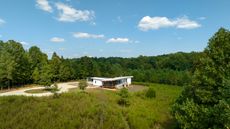 A low-energy farmhouse provides a rural escape in North Carolina
A low-energy farmhouse provides a rural escape in North CarolinaThis low-energy farmhouse is a net zero architectural re-set for a Californian client, an East Coast relocation for a more engaged and low-key lifestyle
By Jonathan Bell Published
-
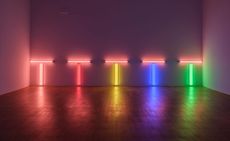 Dan Flavin’s fluorescent lights light up Basel
Dan Flavin’s fluorescent lights light up Basel‘Dedications in Lights’ celebrates Dan Flavin’s conceptual works, at Kunstmuseum Basel
By Amah-Rose Abrams Published
-
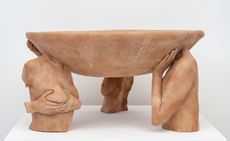 Who is the future of British art? Hauser & Wirth Somerset finds out
Who is the future of British art? Hauser & Wirth Somerset finds out‘Present Tense’ at Hauser & Wirth Somerset showcases some of Britain’s most exciting emerging talents with a group show of 23 artists
By Mary Cleary Published
-
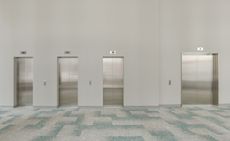 Avery Singer considers 9/11 trauma and corporate anonymity at Hauser & Wirth
Avery Singer considers 9/11 trauma and corporate anonymity at Hauser & Wirth‘Avery Singer: Free Fall’ opens at Hauser & Wirth, London, melding a serene office aesthetic with moments of horror
By Emily Steer Published
-
 Frieze London 2023: what to see and do
Frieze London 2023: what to see and doEverything you want to see at Frieze London 2023 and around the city in our frequently updated guide
By Hannah Silver Last updated
-
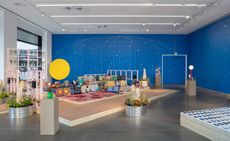 Hospital Rooms and Hauser & Wirth unite for a sensorial London exhibition and auction
Hospital Rooms and Hauser & Wirth unite for a sensorial London exhibition and auctionHospital Rooms and Hauser & Wirth are working together to raise money for arts and mental health charities
By Hannah Silver Published
-
 The best London art exhibitions to see now
The best London art exhibitions to see nowYour guide to the best London art exhibitions, as chosen by the Wallpaper* arts desk
By Hannah Silver Published
-
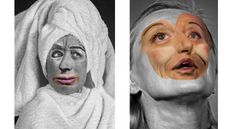 Cindy Sherman’s freaky new portrait collages dissect the divided self
Cindy Sherman’s freaky new portrait collages dissect the divided selfWe preview Cindy Sherman’s new portraits, on view at Hauser & Wirth Zurich during Zurich Art Weekend – which will see digitally manipulated collages explore the many facets of society
By Harriet Lloyd-Smith Published
-
 Gary Simmons on the erasure of racist tropes: ‘I don't want them to be forgotten for their menace’
Gary Simmons on the erasure of racist tropes: ‘I don't want them to be forgotten for their menace’In Gary Simmons’ new show, ‘This Must Be the Place’ at Hauser & Wirth, London, the artist explores the process of cultural erasure, and the traces it leaves behind
By Amah-Rose Abrams Published